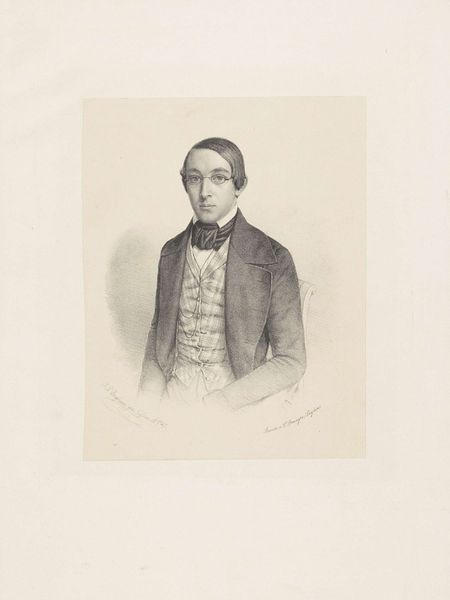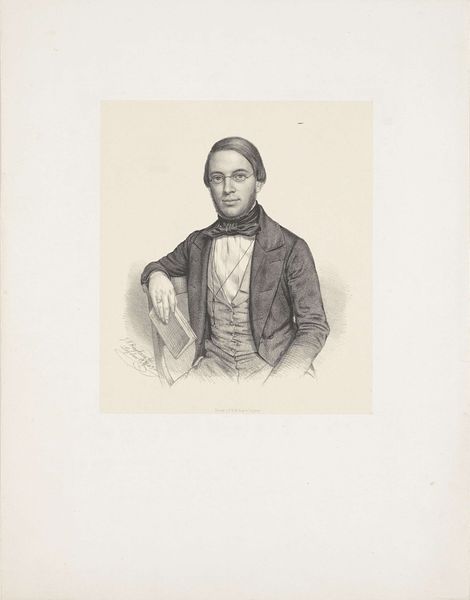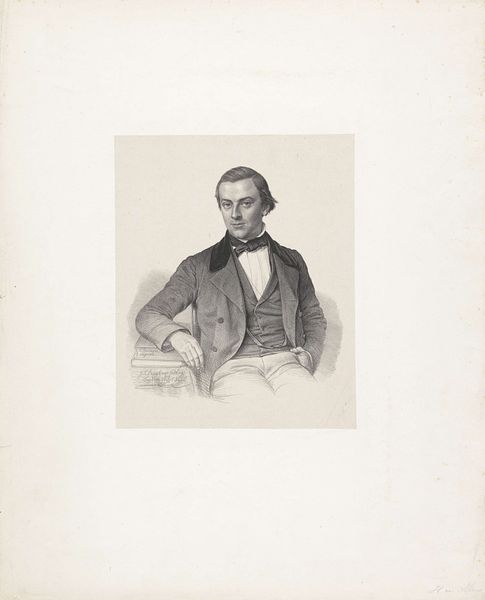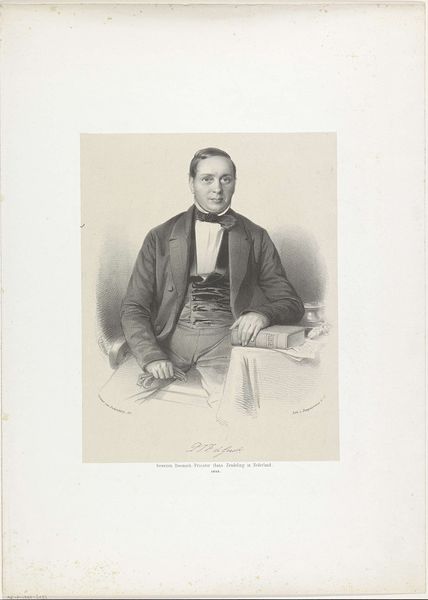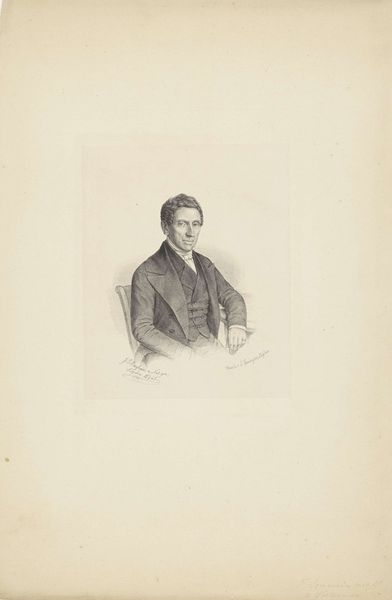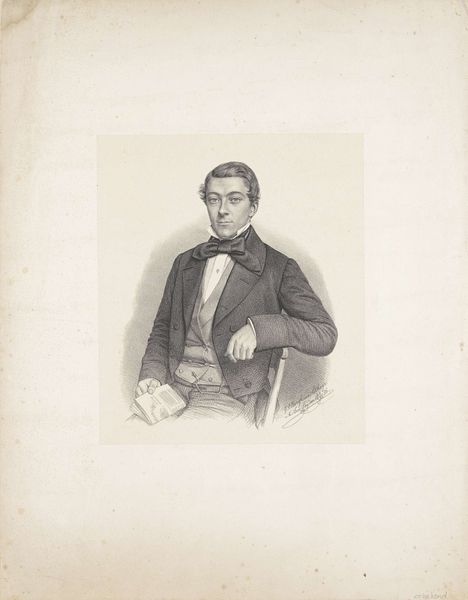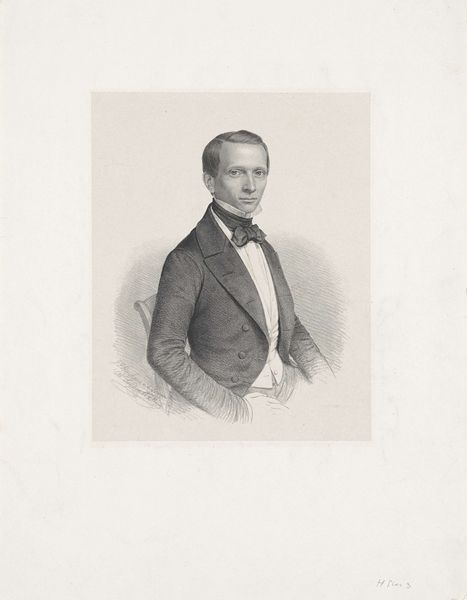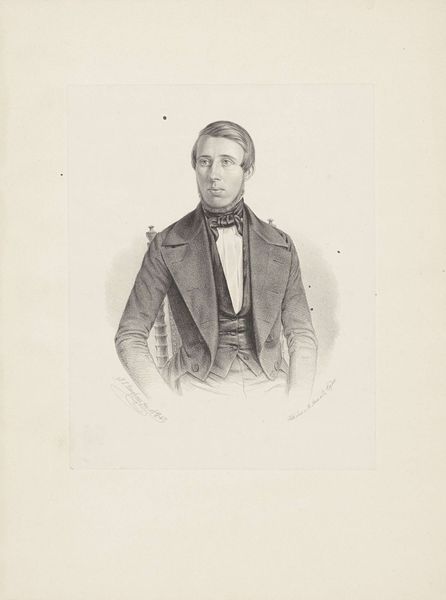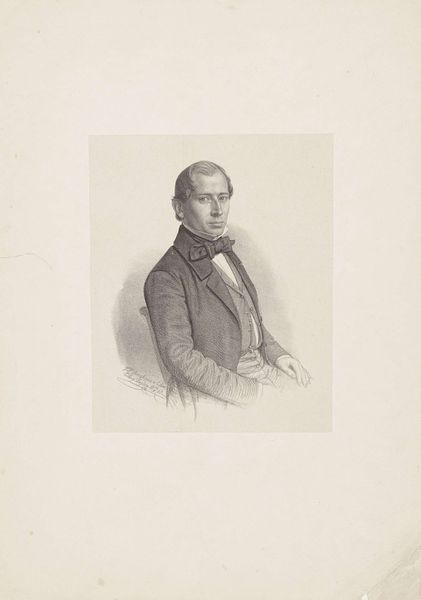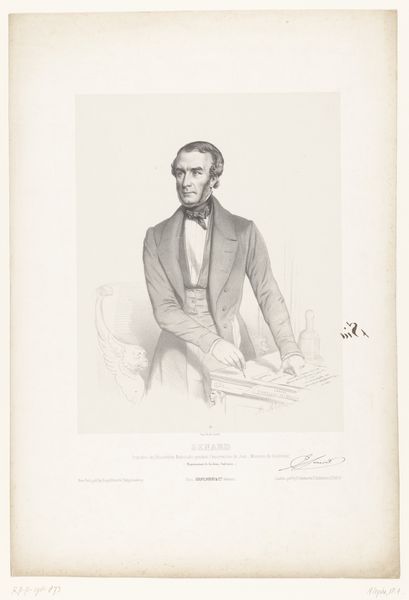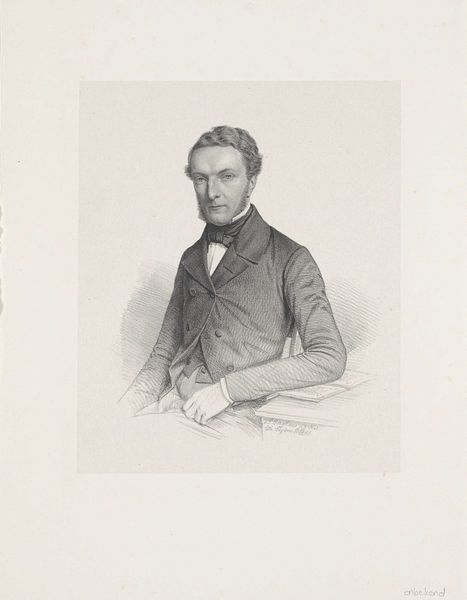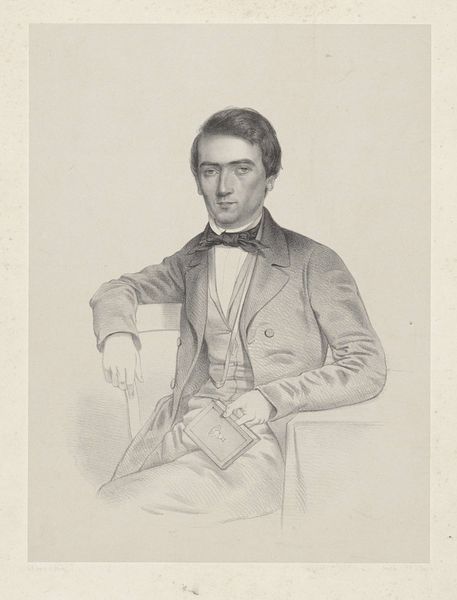
Portret van Adam Ernest Z'Narimuntow Waszklewicz Possibly 1852 - 1859
0:00
0:00
drawing, pencil
#
portrait
#
pencil drawn
#
drawing
#
pencil sketch
#
charcoal drawing
#
pencil drawing
#
pencil
#
portrait drawing
#
realism
Dimensions: height 348 mm, width 261 mm, height 442 mm, width 336 mm
Copyright: Rijks Museum: Open Domain
Curator: This portrait drawing immediately strikes me as introspective, perhaps even melancholic. There’s a reserved quality to his gaze and posture. Editor: We are looking at a pencil drawing, "Portret van Adam Ernest Z'Narimuntow Waszklewicz," likely created between 1852 and 1859 by Johann Peter Berghaus. It's currently part of the Rijksmuseum's collection. It really invites us to consider the societal pressures shaping male identity during that era. Curator: Precisely! His clothing signals a particular class and era. Look closely at his suit: the high collar and tailored waistcoat denote bourgeois respectability, while the neatly groomed hair signals something further, possibly something of ambition. The soft hatching of the pencil creates a very immediate connection with a particular time. It really speaks of the burden placed on individuals within those structures, doesn’t it? Editor: I see your point. The details certainly reinforce notions of status and belonging. But my eye is drawn to the subject's right hand and how it sits lightly across the body and that somewhat uncertain expression: these intimate elements are telling of humanity beyond social constructs. This, together, provides a balance for that sense of melancholic burden you perceived at the start. Curator: Yes, his hand gestures and facial expression become quite meaningful when viewed with your symbolic interpretation. One thing I’m left wondering: how much of the work conveys accurate societal contexts and/or an internalized personal conflict that reveals itself over time through visual association? Editor: Absolutely, and beyond individual anxieties and signifiers of his era, perhaps this representation captures a universal tension between self-expression and social obligation. Curator: Ultimately, by carefully analyzing Berghaus' technique, we can better unpack the individual's struggle against oppressive social constraints. Editor: And through those lenses of cultural symbols and meanings, we gain a richer appreciation for the work’s lasting significance in the archive of human sentiment and expression.
Comments
No comments
Be the first to comment and join the conversation on the ultimate creative platform.
